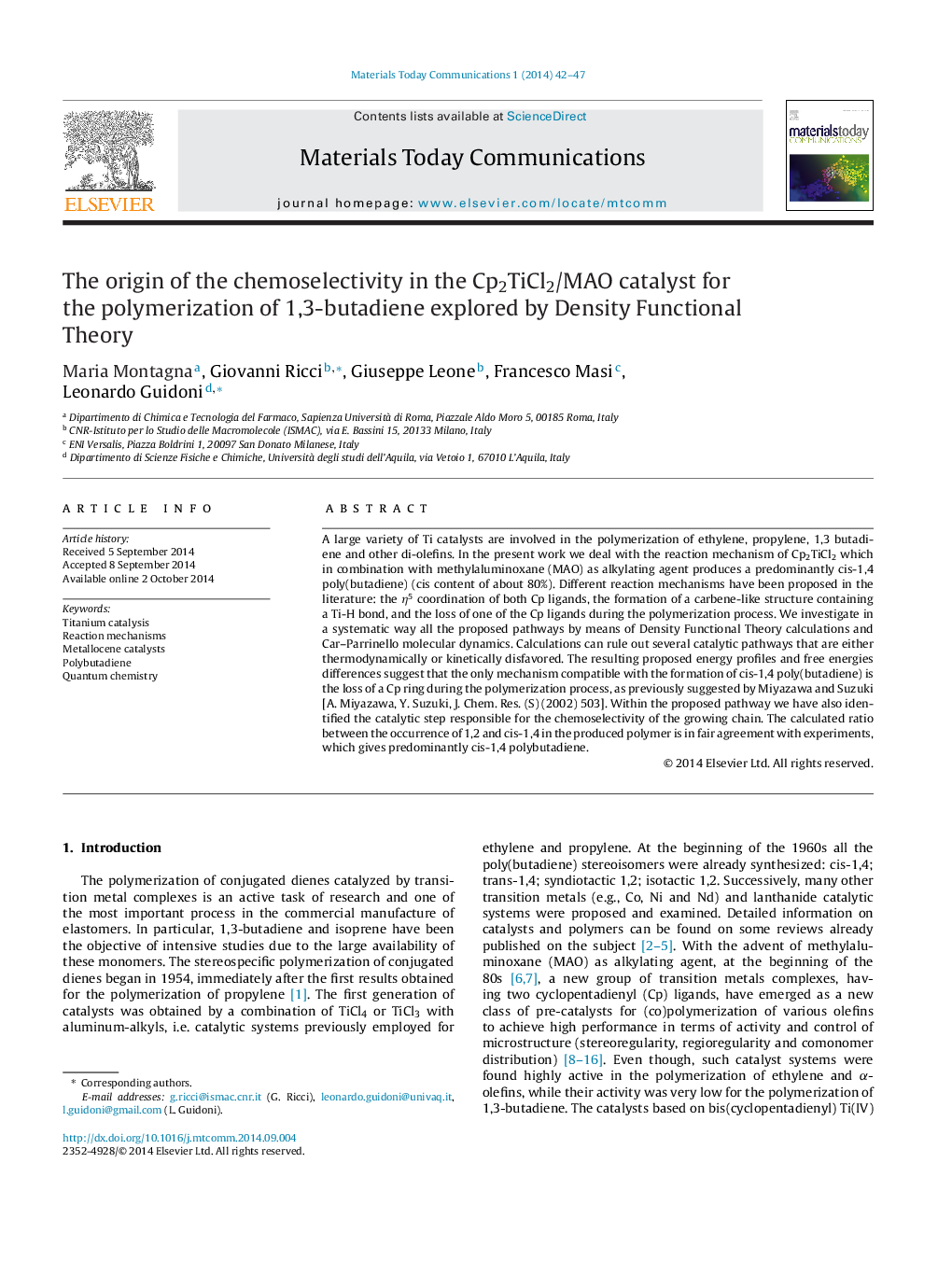| کد مقاله | کد نشریه | سال انتشار | مقاله انگلیسی | نسخه تمام متن |
|---|---|---|---|---|
| 1586278 | 1515070 | 2014 | 6 صفحه PDF | دانلود رایگان |

A large variety of Ti catalysts are involved in the polymerization of ethylene, propylene, 1,3 butadiene and other di-olefins. In the present work we deal with the reaction mechanism of Cp2TiCl2 which in combination with methylaluminoxane (MAO) as alkylating agent produces a predominantly cis-1,4 poly(butadiene) (cis content of about 80%). Different reaction mechanisms have been proposed in the literature: the η5 coordination of both Cp ligands, the formation of a carbene-like structure containing a Ti-H bond, and the loss of one of the Cp ligands during the polymerization process. We investigate in a systematic way all the proposed pathways by means of Density Functional Theory calculations and Car–Parrinello molecular dynamics. Calculations can rule out several catalytic pathways that are either thermodynamically or kinetically disfavored. The resulting proposed energy profiles and free energies differences suggest that the only mechanism compatible with the formation of cis-1,4 poly(butadiene) is the loss of a Cp ring during the polymerization process, as previously suggested by Miyazawa and Suzuki [A. Miyazawa, Y. Suzuki, J. Chem. Res. (S) (2002) 503]. Within the proposed pathway we have also identified the catalytic step responsible for the chemoselectivity of the growing chain. The calculated ratio between the occurrence of 1,2 and cis-1,4 in the produced polymer is in fair agreement with experiments, which gives predominantly cis-1,4 polybutadiene.
Figure optionsDownload as PowerPoint slide
Journal: Materials Today Communications - Volume 1, Issues 1–2, September–December 2014, Pages 42–47